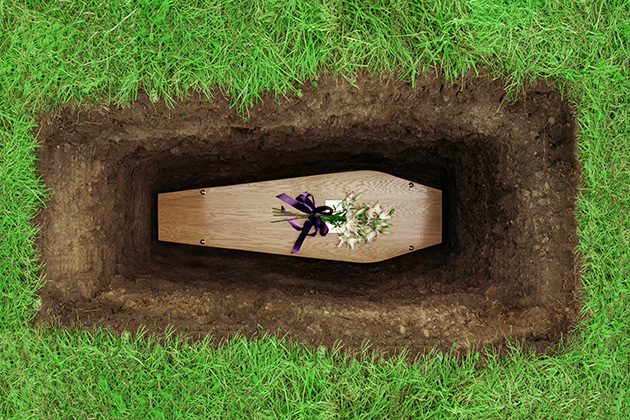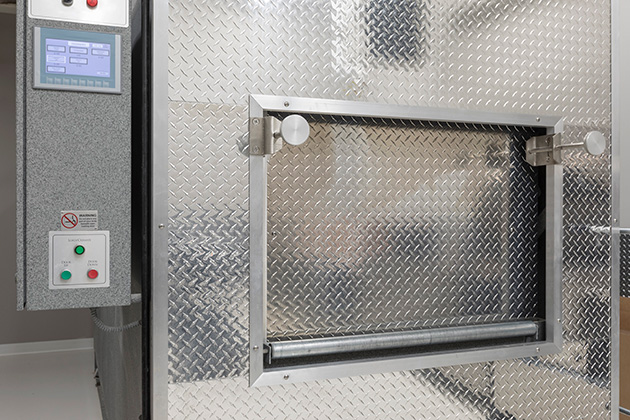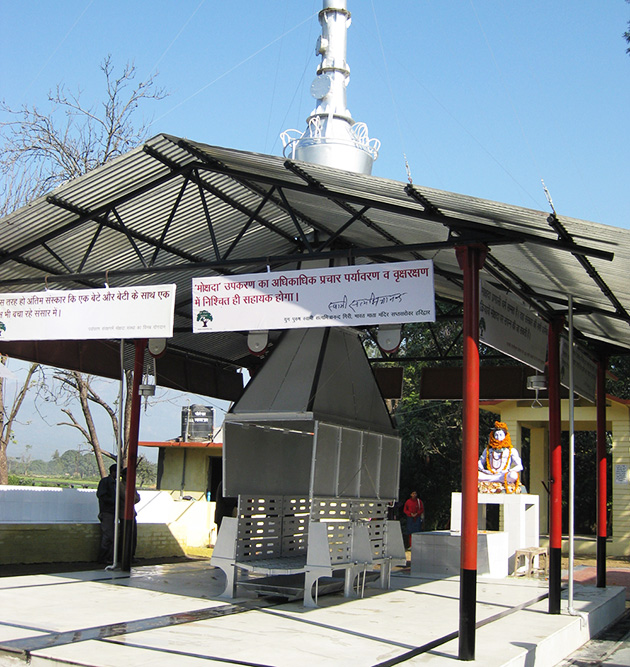Say goodbye the sustainable way
- While it is easy to defer to tradition when it comes to planning a funeral, here is how we can change our approach to death and take a more eco-friendly route.

Yashodhara is a new mommy, IT professional and cat lover…
We all hope to live sustainably these days. We plant trees, we avoid plastic, we compost and recycle, we change our dietary habits, and forego a good bit of comfort – all to ensure that we leave as small a footprint behind as possible. But while we give a lot of thought to living, we tend to completely sideline death. The question we also need to ask is – how can one have a sustainable death and funeral?
Admittedly, it is an unpleasant topic and nobody wants a reminder of their mortality, but it is an essential discussion to have. Recognizing this, Ethico has put together a few thoughts on the different ways an ecologically-minded person can rest easy knowing that they will give back to the environment even in death.
The picture in India
In India, cremation and burial are the most common means of laying the dead to rest. However, both take a major toll on the environment. Traditional cremation is conducted on an open-air pyre, which requires roughly 900 pounds of wood, as well as kerosene or other petrol-based fuel. This amounts to 50 to 60 million trees burned on funeral pyres in India in a year!

Not only is it a cause of deforestation, illegal logging and loss of forest cover, the burning itself releases massive amounts of carbon dioxide emissions. This compounds the poor air quality that urban India is already suffering from. Moreover, most funeral grounds are close to the river and contribute to water pollution as well.
Burials are not much better for the environment either. Before a body is buried, it is embalmed using formaldehyde – a known carcinogen and pollutant. Further, the bodies are enclosed in wooden coffins and buried, which delays the natural process of decomposition. Space, being at a premium, it is not sustainable to earmark more and more land for ever-growing cemeteries.

In an ideal world, we would have had a way of actually going from dust unto dust, but as things are, due to religious considerations and reasons of law, we are left with only a few improvements in the traditional process. Here are some of the options available to us in India at the moment:
1. Say no to wood, and yes to cow dung for cremations
In mid-2018, it was reported that Raipur Municipal Corporation would start using cow dung logs in lieu of wood while cremating bodies. In many parts of the country, it isn’t unusual to find families opting for a mix of wood and cow dung cakes for the pyre. But here, a special machine compresses cow dung into the shape of a log, thus completely eliminating the need for wood. Other Indian cities like Nagpur and Jaipur also have eco-friendly cremation options involving the use of cow dung.

2. Opt for a closed cremation
Since the 1960s, the Indian government has tried to alleviate the problems caused by traditional wooden pyres by introducing gas furnaces and later, electric crematoriums, in various cities. These have a smaller carbon footprint and are a cleaner way of cremation. However, religious beliefs pose a hindrance when it comes to these methods. According to Hindu beliefs, the funeral pyre enables the soul of the departed to rise to the heavens, in which case, an enclosed furnace would only pose as an obstacle. Further, other traditional rituals that are conducted over the wooden pyre are not possible in a closed chamber. Hence the reluctance of the general populace in accepting these solutions.

This being said, with the ongoing coronavirus pandemic, several state governments are mandating the use of gas furnaces or electric crematoriums for all Covid-19-related deaths, irrespective of religion. This is proving to be a problem in cities such as Mumbai, where the death toll is far too high for the existing electric crematoria to cope with, especially with some out of working order. The need of the hour is for civic bodies to focus on upkeep of existing crematorium facilities while procuring new systems at the earliest.
3. Consider a green cremation
Keeping in mind the reluctance of traditionalists in choosing electric/gas furnace crematoriums, a Delhi-based NGO, Mokshda PEVSS, has devised a solution that allows for all the necessary last rites, while also being much greener than a pyre. It is a semi-open, wood and cow dung-fuelled system, which relies on clever design to increase air supply, thereby increasing the efficiency of combustion. The chamber also traps heat and results in hotter fires. In effect, the system brings down the use of wood from the average of 900 pounds required for an open pyre to under 330 pounds. Mokshda’s Green Cremation Systems are now available in 50 Indian cities. Till date, more than 1.5 lakh cremations have been conducted using their system, saving 4.8 lakh trees and significantly reducing the resultant greenhouse emissions and ash.

4. Shun the coffin, choose a shroud
Eco-friendly burials are still a niche concept in India. One way to go green is to opt out of the traditional coffin. How, you ask? The Church of Orlem near Malad, Mumbai, has started offering shroud burials to its parishioners since 2018. The process involves interment of the body in a shroud, without encasing it in a coffin. This ensures that the natural process of decomposition is hastened. Forgoing a coffin also means saving the wood and other material used to build a coffin, while also reducing pollution of the groundwater.
What the rest of the world is doing
While we are currently limited by these options in India, the global community offers some novel ways to embrace the green even after death. Around the world, a number of sites have opened up that allow green burials. The body is cremated and the ashes are buried in a forest or a wooded area. Some cemeteries even allow a person to choose a tree under which one would like to be buried.

A company called Capsula Mundi has also been making biodegradable pods in which cremated ashes can be placed, and a tree can be planted over it. The company is now working on creating pods in which the body can directly be placed, forgoing the need for cremation altogether.
Although controversial, alkaline hydrolysis is yet another emerging option. It is already available in parts of the US, Canada and the UK. The process involves using an alkaline solution to reduce the body to a skeleton. Bodily tissues are reduced to a sterile liquid composed of amino acids and peptides, devoid of DNA. The liquid is processed through a water treatment plant and released into the drains, and the bones are put through a machine called a cremulator and turned into a coarse powder.
It may be a while before these solutions become a norm. For now, what is needed is an open mindset from all of us when it comes to bidding goodbye to our loved ones. Let us be ready to embrace change in the way we leave the world.
Yashodhara is a new mommy, IT professional and cat lover who lives in Mumbai. When not running after her toddler, she’s trying her best to read, write and catch a few extra winks.







